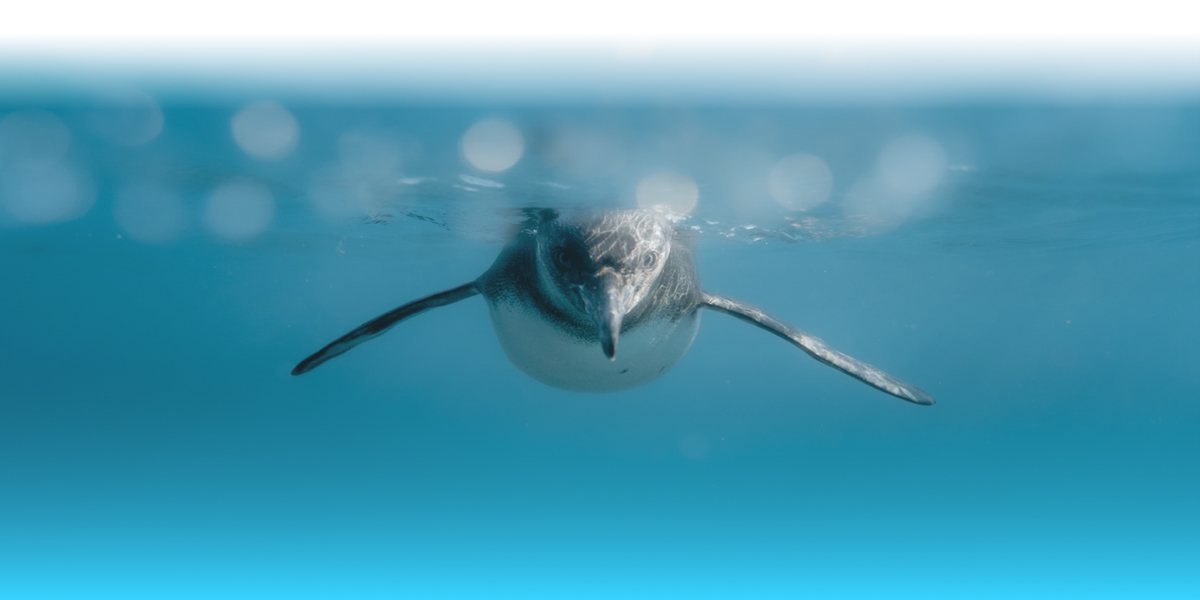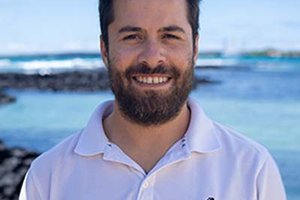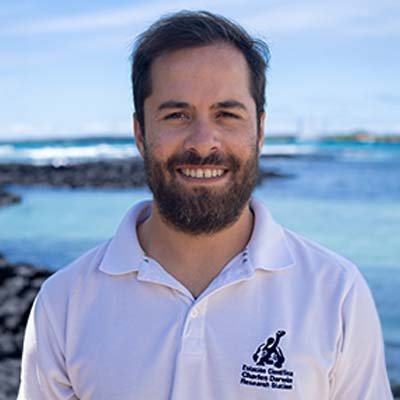It's been nearly a year since I left the bustling city of Quito to immerse myself in the tranquil life of the Galapagos Islands, working as staff for the Charles Darwin Foundation. As I slowly adjust to island life, I want to share one of my fascinating field trips as a multimedia producer.
The long-awaited day finally arrived! The date for traveling to Floreana had been postponed since November, as plans change rapidly in the Galapagos Islands depending on available resources. With four suitcases packed with cameras, lenses, drones, food, and clothing, I set off at 6:30 am on January 24th from the Puerto Ayora dock.
This particular field trip would involve several simultaneous teams working on different projects for the Foundation. Heinke, Miriam, Paul, and Anne's team—Terrestrial Invasive Species—aimed to monitor the Scalesia vegetation in the highlands of the island and establish new quadrants for long-term monitoring. Birgit and David's team focused on terrestrial birds to monitor the population of species inhabiting the island. Gabriela and Félix worked on fisheries to provide advice to local entrepreneurs.
Rakan, the Executive Director, and I joined the expedition to document the projects and capture images of nature, animals, birds, and landscapes over the course of 5 days.
Day 1: Discovering Floreana
Upon setting foot on land, I was struck by an island with only a few blocks of population adorned with red and yellow acacias. The streets leading to the coast directed me towards the black sand beach, a small enclave of stone and ashes that gave way to the most beautiful sunsets I have seen to this day in the Galapagos. Being in a place with such a unique history in the world captivated me.
I found the hotel keys under the mat and, after dropping off my suitcases, set off to capture my first images of nature. Point 1 was the sea lion colony, a recommendation from Rashid Cruz, a local and coworker at the FCD. The place seems to join or divide two currents between an islet combed by prickly pears. On the beach, sea lions, pelicans, and turtles can be seen, and from the air, the view is surreal.
We agreed with Rakan to conduct an interview for a documentary about the foundation's work over the years. There is no cell phone signal on the island; only internet reaches certain houses. Finally, amidst cut-off messages, we agreed and conducted the interview at the end of the black sand beach.
As the sun set in the afternoon, I went in search of flamingos along a coastal path called the Octopus Trail. At the end of the trail, a single flamingo searches for food in a small pool surrounded by mangroves. Its colors are more intense in the sunlight, and I take advantage of the opportunity to sit for a while until the animal gains confidence and approaches a few meters so that I can take videos and photographs.
At nightfall, I met with Heinke's team, who had just returned from an intense day of work in the highlands of the island. We discussed the activities for the next day and decided to leave early in the morning.
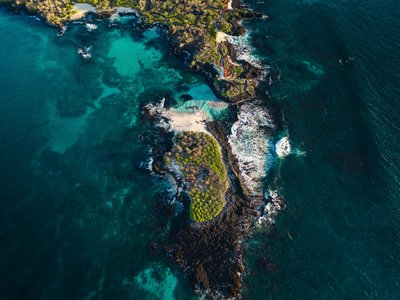
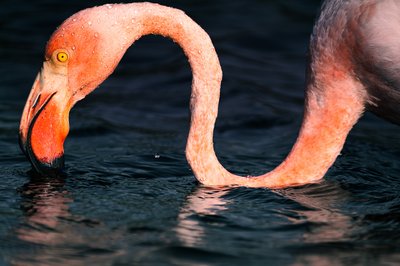
Day 2: Exploring the Highlands of Floreana
I filled my water bottles, loaded the backpacks onto the truck, and headed towards the green hills. In the front of the vehicle were about 5 people who also used the truck as a means of transportation for their daily work activities; they laughed, and each one got off at different parts of the journey.
Upon arrival, the humid landscape contrasted with the dryness of Puerto Velasco Ibarra. The vegetation was dense and intertwined with blackberry plants that cleared the way in search of Scalesia quadrants.
I captured images of the process, which involved long walks in difficult terrain, clearing paths with a machete. The quadrant measurement involved generating transects and identifying plant species one by one. The work is extremely meticulous and repetitive and must be organized to observe variations in vegetation over a set period.
Later, we split up, and we decided that I would accompany Paul, who was in charge of flying the drone to monitor the Scalesia population near Asilo de la Paz. We climbed past caves and a stone-carved face to a lookout point, which would be a good starting point for the flights. I took the opportunity to document Paul's work and capture aerial shots of the forests.
On the way down, we had to walk several kilometers in search of a car that could take us closer to the town. Without luck, we only saw a tractor approaching from a distance. We signaled it to stop, and they did. We hopped onto a kind of cart that took us 2 km closer to the town, and then we walked again.
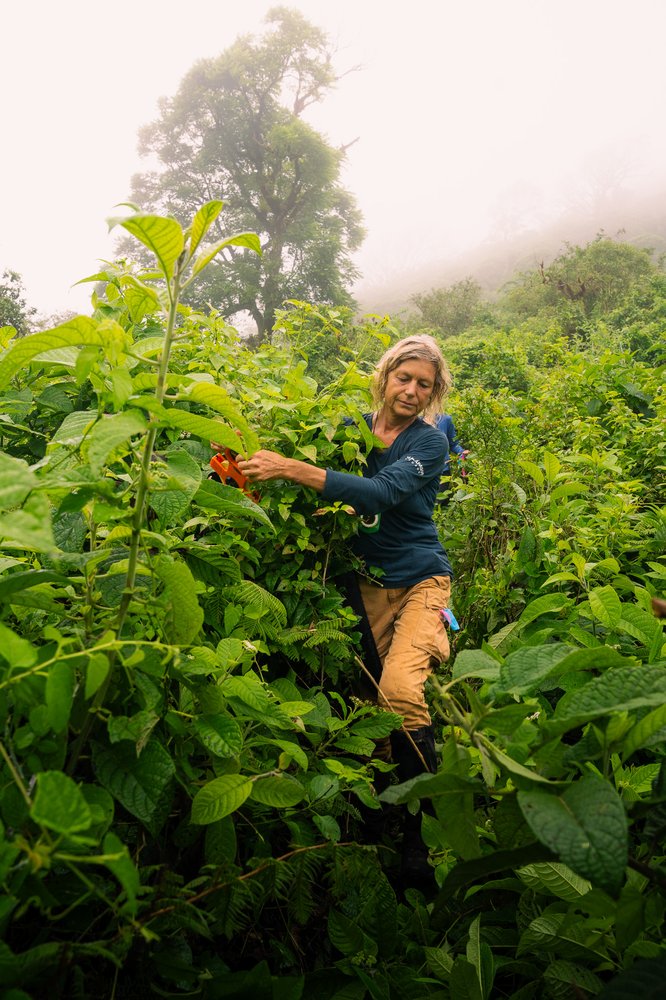
Day 3: A New Day
We set out with Rakan, Anne, Miriam, and two park rangers along the Post Office trail from the highlands of the island, once again at sunrise.
The trail, leading towards the beach, changes vegetation abruptly. We carried water and equipment along the route to conduct our work. The first rays of light began to illuminate the branches of the trees as we ventured into the forest. We split into two groups to cover different parts of the process: one group cleared some of the trail and measured the transects, while the other group identified and documented the species inhabiting each quadrant. Several hours and sunburns later, we exited the trail and rested under a tree, finally finding shade to relax for a while. We then prepared to descend in the back of a truck bed as the sun set behind the sea.
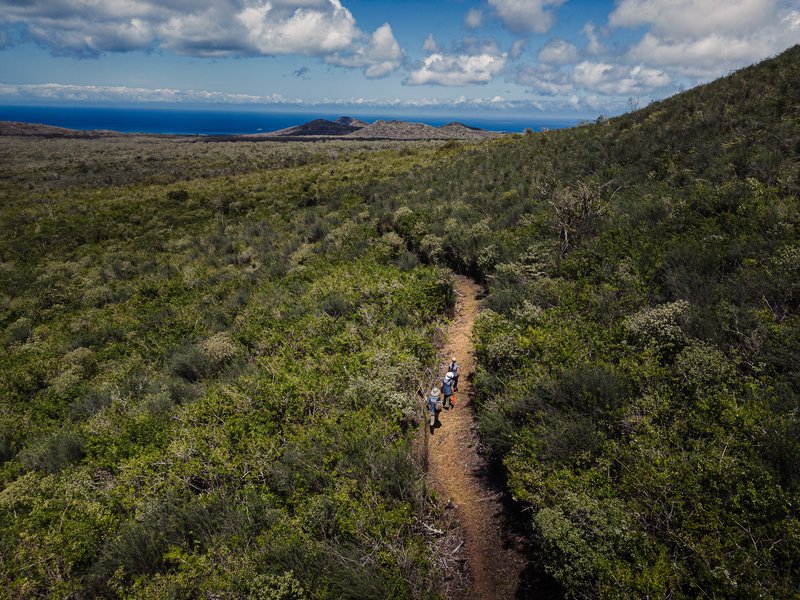
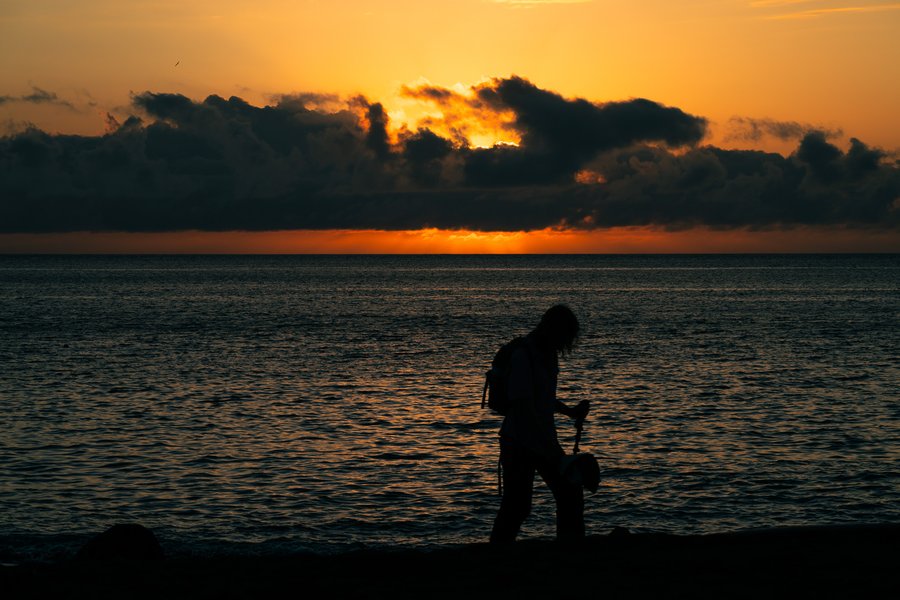
With high expectations for two more days alongside the land bird team, I am convinced that Floreana reveals itself as a unique natural treasure. I am excited to share more of this adventure in an upcoming installment.
Stay tuned!


